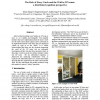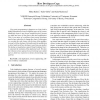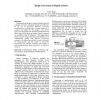2015 search results - page 84 / 403 » Hidden Software Capabilities |
ICSE
2010
IEEE-ACM
14 years 2 months ago
2010
IEEE-ACM
The architecture of software systems is known to decay if no counter-measures are taken. In order to prevent this architectural erosion, the conformance of the actual system archi...
SEFM
2009
IEEE
14 years 3 months ago
2009
IEEE
Abstract—In order to increase their stealth, malware commonly use the self-modification property of programs. By doing so, programs can hide their real code so that it is diffi...
AGILEDC
2006
IEEE
14 years 3 months ago
2006
IEEE
Much of the knowledge used within an XP team is tacit, i.e. it is hidden and intangible. Two tangible artefacts that carry information about the team’s work are the index cards ...
IWPC
2006
IEEE
14 years 3 months ago
2006
IEEE
Copy-paste programming is dangerous as it may lead to hidden dependencies between different parts of the system. Modifying clones is not always straight forward, because we might ...
EUROMICRO
1998
IEEE
14 years 1 months ago
1998
IEEE
Transformational design is aformal technique directed at design correctness. It integrates design and veriJication by the use of pre-proven behaviour preserving transformations as...



